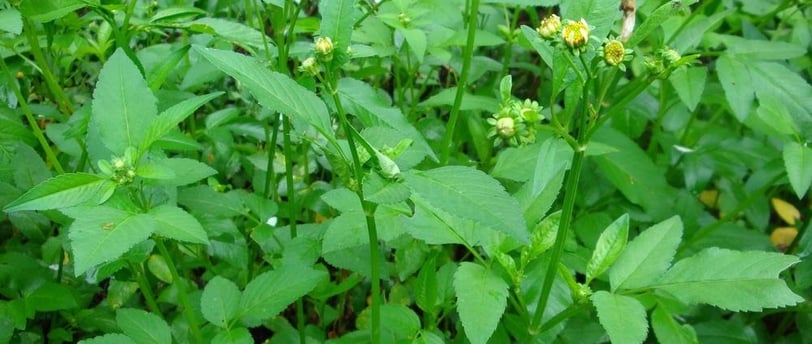How Sidas stop pathogens
Blog post description.
William Bruneau
2/5/20253 min read


How Sidas Stop Pathogens
Nearly every herbalist will tell you that the whole of a plant, as opposed to certain individual constituents, offers additional benefits due to the synergy between the individual elements of the plant. Consider that a plant first and foremost is protecting itself, and that over millennia it has found ways to internally craft great synergies from the natural interactions of its many constituents. Most Western research has been in search of a single compound, a super-star compound, that Western pharmaceutical companies can synthesize, patent, and sell for a ton of money as a sole cure. This compound may or may not be the same as the original.
Unfortunately, pathogens are actually very, very clever and have become quite adept at finding ways to neutralize any single compound that gets in their way. Buhner describes pharma’s complete failure in several very clear and thorough chapters in his book, Herbal Antibiotics. I highly recommend that everyone read it now! The time grows short. There is now a long list of pathogens that are resistant to all antibiotics except colistin, and colistin’s end is quite near.
Colistin is a decades-old drug that fell out of favor in human medicine due to its kidney toxicity… As multi-drug resistant bacteria became more prevalent in the 1990s, colistin started to get a second look as an emergency solution, in spite of toxic effects… It remains one of the last-resort antibiotics for multidrug-resistant bacteria. [1]
When pharmaceutical companies extract individual substances out of the complex that is a plant, and then put them to use killing pathogens, these single compounds are relatively quickly neutralized by those pathogens. So for a short-term gain, the medicinal value from this substance is lessened in the future. This works against its forever value for both the plant and humans. This backwards way of thinking is what got us into this mess to begin with. Creating more single solutions for the bacteria to quickly neutralize just gets us further and further behind in finding a long-term solution, a solution that is sustainable. The only solutions that last are natural complex solutions that the pathogens never figure out.
Most peer-review studies in this book generally use solvents, sometimes exotic, to extract single elements from the plant, because the goal is to find out how much of this element is in the plant, and if this concentrated element kills pathogens by itself. Finding the characteristics of one element is useful, but this ignores any benefits from the synergistic inter-reactions of the many other elements in a Sida plant. We are just beginning to understand how the several hundred elements in a Sida plant interact, but it is already beautiful.
There are very few studies anywhere that look at the benefits of consuming a whole Sida plant together, or all the aerial parts, and they are quite encouraging. Last year I realized that by making the tincture only of the leaves (traditional), I was missing out on additional benefits from the root, stem, bark, seed, fruit, blossom, bud, etc. There is no part of Sida that is not medicinal according to the peer-review research, and the different parts are medicinal in at least somewhat different ways.
The Sidas in this book have been peer-review tested to be essentially non-toxic, anti-inflammatory, and analgesic. They can be considered a tonic and adapto-genic that keeps the body in good health. Sidas are anti-pathogen (antibiotic, anti-malaria, anti-worm, cytoxic, anti-fungal, and somewhat antiviral). The bugs never figure out whole-herb herbal anti-pathogens.
Most of the world takes Sidas by drinking a tea of some leaves or roots. I personally squirt some alcoholic tincture into a glass of water. Sidas are plants that could grow in many temperate gardens. They historically have been easily processed for the health and protection of family, friends, neighbors, etc. Best of all, the Sidas produce these antibiotics for their own preservation, so that these great benefits are constantly “updated” by the plants themselves.
Adaptogens are plant derived biologically active substances that improve your immunity and physical endurance. Many herbal preparations have been evaluated for their adaptogenic activity during exposure to stressful conditions. In response to stressor, a series of behavioral, neurochemical and immunological changes occur that ought to serve in an adaptive capacity…. In conclusion, the above study indicates positive adaptogenic activity of the extract Sida cordata (whole plant). [405]
Sidas are amazing plants. Sida cordifolia is a CNS (central nervous system) sedative and depressant [132], but is also a CNS stimulant [120]. Sida acuta is an abortifacieant [138 et al] and an anti-implantation contraceptive that has no lingering effects [96], but it is also an aphrodisiac [561], uterotonic [313], is essential for post-delivery [305], and has a long history of helping general female problems like vaginal candidiosis [237]. Sida acuta is also aphrodisiac for men [217], improves low or no sperm [201], and is useful for male sexual problems like impotence [526]. I have listed over160 health benefits that the Sidas deliver.
[number] = refers to a particular peer-review study
contact us
www.bbruneau@bbruneau.com
+1 707 459 3390
© 2025. All rights reserved.
We are very serious about your privacy. Unless required by law, we will never disclose your personal information to anyone else.
